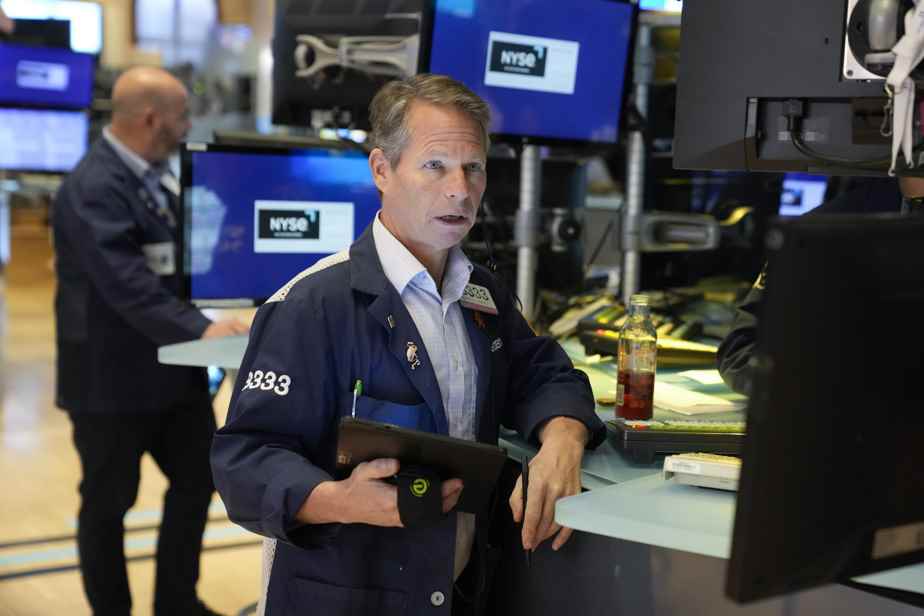(New York) The New York Stock Exchange concluded on Tuesday in the red for the NASDAQ and the S&P 500, while the Dow Jones remained stable, after the protests in China this weekend and pending statements from the Chairman of the US Federal Reserve (Fed).
The Dow Jones index remained close to equilibrium (+0.01% to 33,852.53 points), the NASDAQ, with strong technological coloring, fell by 0.59% to 10,983.78 points and the broader S&P 500 index fell 0.16% to 3957.63 points.
The Toronto floor’s S&P/TSX Composite Index climbed 56.92 points to end the session with 20,277.41 points.
“Protests in China in response to the zero-tolerance policy against COVID-19 have created a source of unease in global markets, despite some optimism that the country may ease restrictions,” analysts said. Schwab.
They also highlighted the fear of a national strike in rail freight transport in the United States, while railway workers, in wage negotiations, threaten to stop work after December 9.
But it was above all Wednesday’s intervention by the president of the American central bank (Fed), Jerome Powell, and the grooming of portfolios at the end of the month that made investors cautious.
“The markets are hesitant before Powell’s intervention on Wednesday,” summarized Karl Haeling of LBBW for AFP, referring to the speech that the Fed official is to deliver at a conference where he will also be interviewed.
So far the Fed has raised rates by 75 basis points four times in a row to between 3.75% and 4%, but “markets now expect Mr. Powell to signal that he there will only be an increase of 50 basis points in December,” said Haeling. The next monetary decision is scheduled for December 14.
According to the LBBW analyst, the shares even have “a chance to trade higher” on Wednesday, “as long as Mr. Powell does not create a surprise”.
“If he does say what everyone is already thinking, then there will be a sigh of relief and that should lead to some upside trading,” he said.
Today’s economic news delivered mixed data.
US consumer confidence deteriorated again in November, to a level close to analysts’ expectations. The general index of the Conference Board fell to 100.2 points, against 102.2 points the previous month.
For its part, the Case-Shiller house price index showed a further decline of 1.2% in September, reducing the annual increase to +10.4% against +13% the month before.
On the stock market, Apple weighed on the NASDAQ, dropping 2.11% to $141.17, as several analysts warned that iPhone shipments would not be there for the holiday season in because of protests at the contract factory in Zhengzhou, China, which affected production.
An analyst from TFI Asset management, quoted by Bloomberg, estimates that shipments of iPhone 14 Pro and 14 Pro Max could be 15 to 20 million units lower in the fourth quarter.
Shares of chain stores were on the rise, such as Macy’s (+1.51%) or Kohl’s (+3.48%), while the national distribution federation issued an encouraging opinion on the good disposition of consumers for year-end spending despite inflation.
More Americans than last year have thus opened their wallets in recent days between Black Friday and Cyber Monday, the big weekend of massive promotions in stores and on the Internet which traditionally marks the start of the Christmas shopping time.
This benefited cruise line stocks, such as Carnival (+4.61%) which saw a record volume of bookings during Cyber Monday, which benefited the entire travel sector, from Royal Caribbean (+3 .15%) to American Airlines (+2.24%) via Expedia (+2.81%).
Boeing was one of the big winners of the Dow Jones (+2.03%).
On the bond market, the rates on 10-year Treasury bills tightened a little, to 3.76% against 3.68% the day before, while the dollar strengthened.
with The Canadian Press
